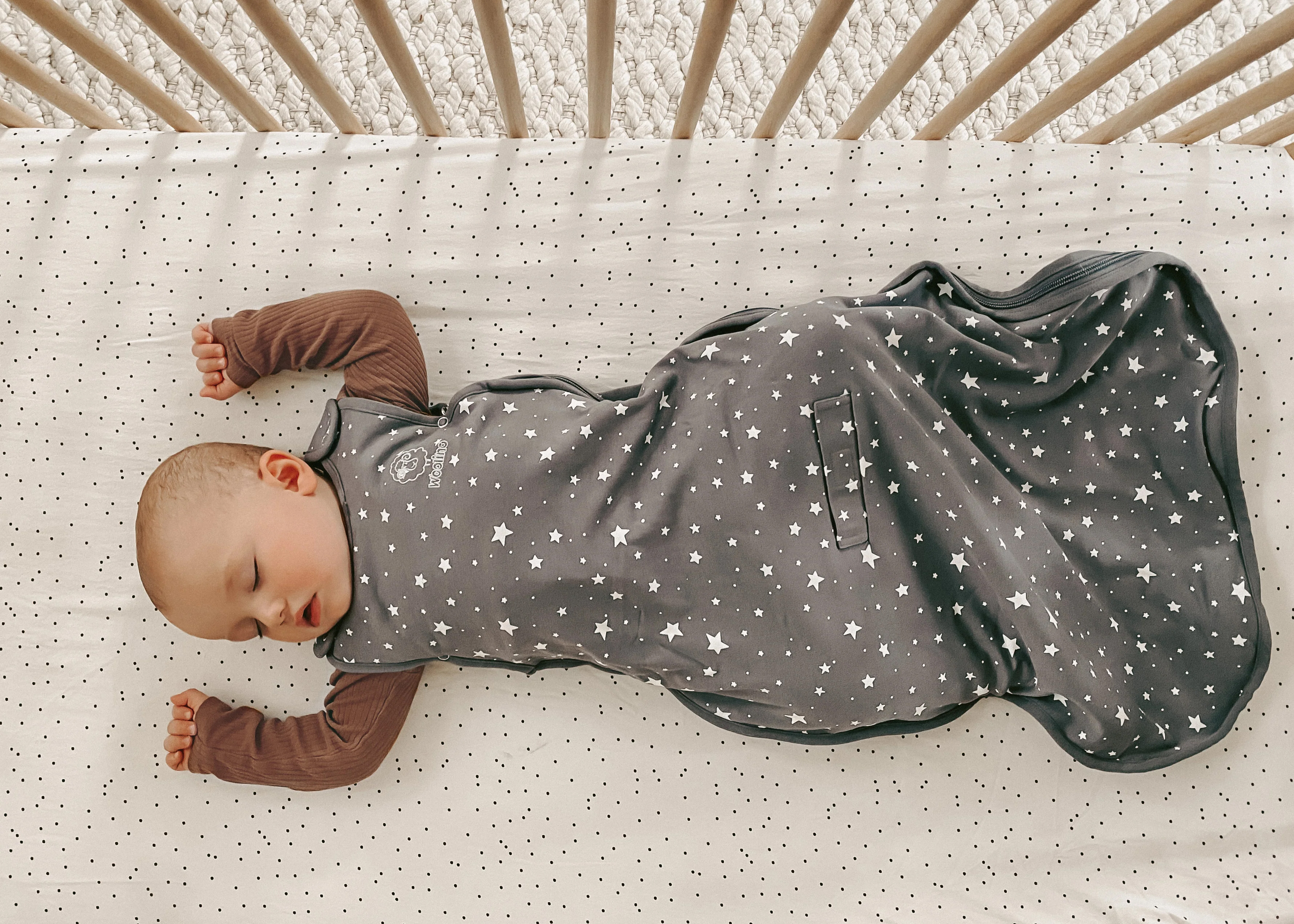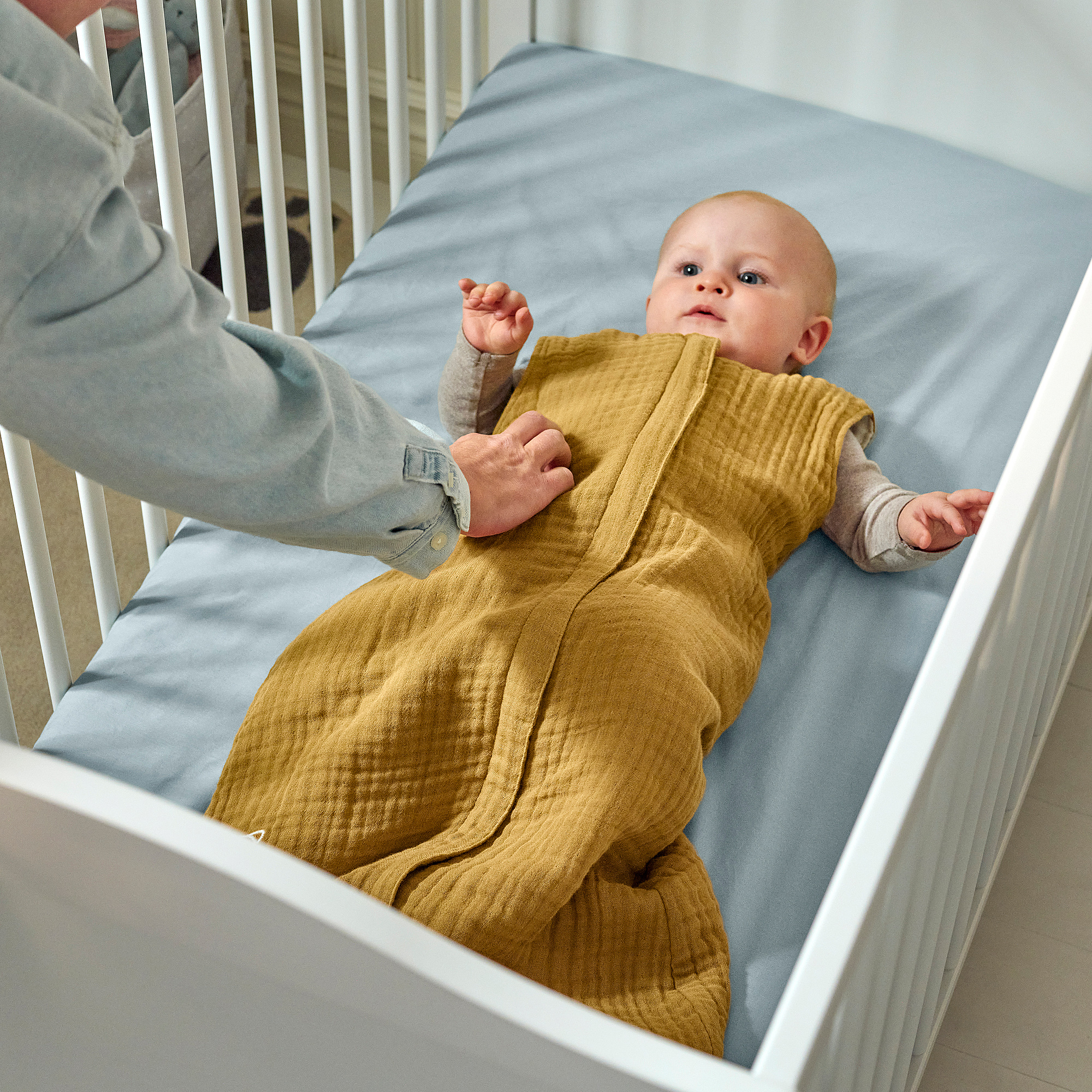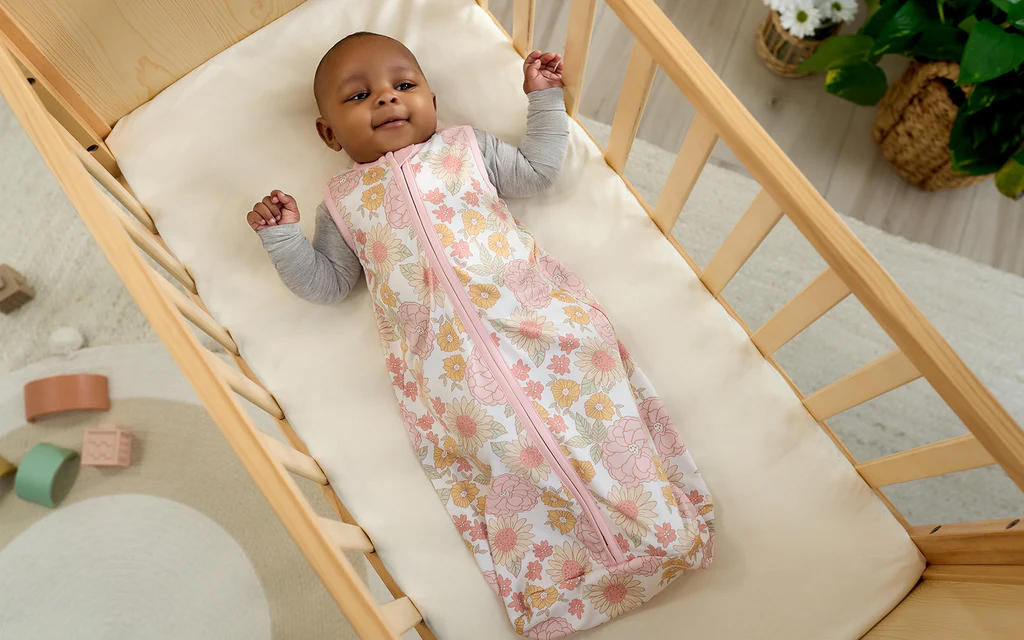
Why Sleep Sacks Make a Difference in Your Baby’s Sleep
When my daughter was born, I quickly realized that traditional blankets in the crib were more trouble than comfort. The fear of loose bedding covering her face kept me up at night, and I knew I had to find a safer alternative. That’s when sleep sacks entered our lives, and honestly, they transformed our nights.
Sleep sacks are essentially wearable blankets designed to keep babies warm and secure without the risks that come with loose blankets. Their snug fit around the neck and arms ensures that the fabric doesn’t slip over a baby’s face, eliminating the risk of suffocation. For me, this was a huge relief—finally, I could rest easy knowing my baby was both warm and safe.
But it’s not just safety that convinced me. Sleep sacks also help regulate body temperature better than regular blankets. Babies can’t adjust their warmth as effectively, so being wrapped in a breathable, cozy sack keeps them comfortable throughout the night. I remember one summer night when my baby was fussing—after switching to a lightweight cotton sleep sack, she settled instantly. It was a game-changer.
Another benefit I noticed was how sleep sacks became part of our bedtime routine. Putting on her sleep sack signaled to my baby that it was time to wind down, creating a comforting and consistent cue that helped her settle faster. This subtle ritual gave me a greater sense of control and calm during those overwhelming early months.

Using sleep sacks turned bedtime from a stressful guessing game into a peaceful, reassuring experience for both my baby and me.
Overall, choosing a sleep sack was about creating a safer, warmer, and more predictable sleep environment for my child. It’s a small change with a big impact, one that every parent juggling safety and comfort should consider.
What Sets Sleep Sacks Apart from Traditional Blankets
Many parents start with blankets because they seem simple and familiar. But the truth is, blankets in a crib can quickly become a hazard. Babies are naturally restless sleepers—they wiggle, kick, and move their arms and legs constantly. This means blankets can easily slip, bunch up, or even cover their faces, creating a risk of suffocation.
Sleep sacks, on the other hand, are designed specifically to eliminate those risks. Their shape and snug openings around the neck and arms keep the baby covered and warm without any loose fabric that can shift dangerously during the night. It’s a thoughtful design that considers how babies move, providing safety without sacrificing comfort.
Another big advantage is temperature regulation. Unlike thick blankets that can cause overheating, many sleep sacks come in materials tailored for different seasons—from lightweight cotton and muslin for warmer months to cozy fleece or quilted fabric for cooler nights. This variety helps parents choose the perfect balance between warmth and breathability.

I remember one family I worked with who kept battling their baby’s night sweats because they were using heavy blankets year-round. Once they switched to a cotton sleep sack in summer and a fleece one for winter, the baby’s sleep improved dramatically.
Sleep sacks also simplify nighttime diaper changes. Most have convenient zippers or snaps that let you open just the bottom half without fully undressing the baby. This way, you can keep them warm and comfortable while minimizing disruptions—something every tired parent will appreciate.
Sleep sacks take the guesswork out of keeping your baby warm safely—no loose blankets, no worries.
So, while blankets might feel cozy and traditional, sleep sacks are a modern solution built around your baby’s safety and comfort, making them a smarter choice for peaceful nights.
Finding the Right Sleep Sack for Every Season
Choosing a sleep sack that fits the season is key to keeping your baby comfortable all year round. Babies don’t regulate their body temperature as well as adults, so it’s important to adjust their sleepwear accordingly. A sleep sack can be lightweight and breezy in summer or cozy and insulating in winter, depending on the material and design.
One of the most useful tools for this is the TOG rating, which measures thermal insulation. Lower TOG ratings (around 0.5 to 1.0) are perfect for warmer weather, while higher ratings (2.5 or more) are better suited for cold months. Knowing your room’s temperature and the right TOG for your baby’s sleep sack can help prevent overheating or getting too chilly.

In our own experience, I noticed that my baby got fussy during warmer nights despite being in a sleep sack. Switching to a lightweight, breathable muslin sleep sack made a noticeable difference—she slept more soundly and didn’t wake up sweating. In contrast, during winter, a plush fleece sleep sack kept her cozy without the need for extra blankets.
Seasonal fabrics vary widely. Cotton and muslin are breathable and gentle on delicate skin, great for spring and summer. Fleece, wool blends, or quilted fabrics provide warmth in the cooler months. Some brands even offer adjustable sleep sacks with removable sleeves or layers to adapt to temperature changes without needing multiple products.
Remember that layering underneath the sleep sack also matters. Light pajamas paired with a warmer sleep sack can offer the right balance. Always check your baby’s neck or back for signs of overheating, like damp skin or flushed cheeks, and adjust clothing layers as needed.
Using a sleep sack matched to the season ensures your baby stays comfortable without the risk of overheating or chilling—both of which can disrupt sleep.
By tuning into the seasonal needs and your baby’s reactions, sleep sacks become a versatile tool that supports healthy, peaceful rest all year long.
Safety Practices When Using Sleep Sacks
Safety is always the top priority when it comes to your baby’s sleep environment, and sleep sacks play a big role in making cribs safer. While they reduce risks associated with loose blankets, it’s important to use them correctly to maximize their benefits.
First, size matters. A sleep sack that’s too big can pose a hazard by slipping over the baby’s head or allowing too much movement inside, while one that’s too small can be uncomfortable and restrict motion. When shopping, look for sleep sacks designed for your baby’s age and weight, and make sure the neck and arm openings fit snugly but comfortably.
Another key point is to stop using sleep sacks once your baby starts standing or climbing. At that stage, a sleep sack can limit mobility and potentially cause tripping or falls when trying to get out of the crib. Many manufacturers recommend transitioning out of sleep sacks around 18 to 24 months, but observe your child’s development closely to know the right time.
Besides the sleep sack itself, maintaining a safe crib environment is critical. Keep the crib free from pillows, toys, bumpers, or any loose bedding. Even with a sleep sack, these items can increase the risk of suffocation or entanglement.
In my practice, I’ve met parents who felt sleep sacks made their babies safer but overlooked clearing the crib entirely. Safety is layered—sleep sacks help, but they don’t replace good crib hygiene.
Also, be mindful of the material’s breathability. Overheating can be just as dangerous as cold. Choose sleep sacks made from breathable fabrics appropriate for the room temperature, and avoid overdressing your baby underneath.
Using sleep sacks correctly means balancing snug fit, appropriate sizing, and a clutter-free crib to create the safest sleep environment possible.
By following these guidelines, parents can confidently use sleep sacks as a simple yet effective tool to protect their little ones during sleep.
How Sleep Sacks Changed Our Nights: Personal Stories
Over the years, I’ve seen firsthand how sleep sacks can transform not just baby sleep but the entire family’s nights. One memorable case involved a couple struggling with their newborn’s frequent night waking. Their baby would often get tangled in blankets or fuss because of being too cold or too hot. After we introduced a breathable cotton sleep sack suited for the warmer months, their little one started sleeping longer stretches—sometimes even six hours at a time. The parents described feeling a weight lifted, finally getting the rest they desperately needed.
Another family shared that their toddler, who was a restless sleeper, felt comforted by the snug feeling of a sleep sack. They described it as a “gentle hug” that soothed their child into calm sleep. This kind of emotional security is often overlooked but can be a powerful factor in improving sleep quality.
Personally, I found that sleep sacks simplified our bedtime routine immensely. No more wrestling with blankets or waking the baby to fix tangled bedding. Instead, slipping into a sleep sack became a signal that it was time to settle down, creating a predictable and calming ritual. This routine helped my daughter develop independent sleep skills faster, as she connected the sleep sack with a safe, cozy environment.
What stands out in all these stories is that sleep sacks do more than keep babies warm—they contribute to emotional comfort and a sense of security. For parents juggling endless worries, this simple garment can provide priceless peace of mind.
Sleep sacks helped us build a bedtime routine that worked not just physically, but emotionally—for both baby and parents.
Every family’s journey is unique, but the consistent thread is that sleep sacks offer practical safety alongside comforting familiarity, supporting better sleep for babies and happier parents alike.


